If you’re in the market for an LS family engine but can’t decide between the LS2 vs LS3, you’ve come to the right place. While both of these engines share some similarities, they have some key differences worth exploring.
Look at the similarities between the LS2 and the LS3. The architect of the third and fourth-generation Chevy V8’s have some striking similarities. However, the Gen IV’s are supposedly a slight upgrade from their Gen III predecessors.
The LS2 boasts a 6.0L displacement, while the LS3 has a more significant displacement of 6.2L. But what else sets these engines apart? The intake, camshaft, and various small details are also notable differences that contribute to varying performance.
So, which engine is best for your needs? We’ll dive into the details and compare LS2 vs. LS3, covering everything from fuel economy to power output and component durability.
Search Terms: ls2 vs ls3 horsepower, ls2 vs ls3 reddit, ls2 vs ls3 heads, ls2 vs ls3 crankshaft, Ls2 vs ls3 specs, Ls2 vs ls3 reliability, Ls2 vs ls3 performance, ls2 vs ls3 for boost
LS2 vs LS3 Engine Overview
The LS2 and LS3 engines belong to Chevy’s Gen IV engine platform, with the LS2 being the pioneer of the lot. Though not significantly different from its predecessor, the Gen III platform, it underwent notable improvisations. Relocation of camshaft position sensors and knock sensors made space for other new technologies. Active-Fuel-Management system and the possibility of variable valve timing were the primary systems.
Within two years of releasing the 6.0L LS2, the critical design changes propelled the LS3 to the forefront. Increased displacement and higher flow figures are the heroes. So, how does the LS2 vs. LS3 battle pan out regarding history and specs? The subsequent sections will unravel this in detail.
-Chevy 6.0L V8 LS2 Engine History
The LS2 engine was designed to outpower its predecessor, the LS1, which had been the standard engine for the C5 Corvette since 1996.
In 2005, General Motors decided to take it further by boosting the C6 Corvette’s horsepower and introducing a more sophisticated powerplant. Enter the LS2 engine, the first engine to feature Active-Fuel-Management.
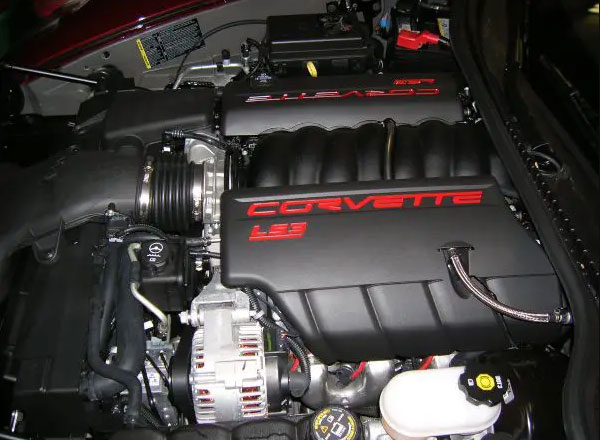
This innovative fuel management system could shut down individual cylinders to provide enough power for specific situations, effectively reducing fuel consumption. However, while this feature caused excitement for some, it also angered many loyal Corvette enthusiasts.
The LS2 engine block design was touted as a significant overhaul by Chevy, and however, in reality, only subtle modifications were made to the Gen IV LS2 block compared to the former Gen III build. Despite this, many interchangeable parts between these engines were welcomed in the aftermarket community, as gearheads could leverage their existing knowledge of older parts.
Unfortunately, the LS2 V8 engine was short-lived, only gracing the C6 Corvette for a mere 3 years. Before its ultimate retirement in 2009, it found homes in Cadillac, Pontiac, and Saab models. But in the end, the LS3 emerged triumphant.
-Chevy LS2 Specs and Applications
| Engine | Chevrolet 6.0L LS2 Engine |
| Configuration | 90° V8 |
| Displacement | 6.0L (364.1 cid) |
| Aspiration | Naturally Aspirated |
| Valvetrain | Pushrod OHV 2 Valves Per Cylinder |
| Block/Head | Aluminum/Aluminum |
| Bore x Stroke | 4.00 inches (101.6 mm) x 3.62 inch (92mm) |
| Compression Ratio | 10.9:1 |
| Weight | Long Block ≈ 400lbs |
| Horsepower | 400 hp @ 6,000 RPM |
| Torque (lb-ft) | 400 lb-ft @ 4,400 RPM |
The LS2 engine packs a punch, topping its LS1 predecessor with 50 extra horses, thanks in part to an additional 0.3L of displacement. The LS2 is built for speed and efficiency by boasting new exhaust manifolds for improved performance. Its aluminum cylinder heads and block contribute to its lightweight design to minimize bulk.
What sets the LS2 apart from the LS1 is its increased bore diameter; at 4.00 inches compared to the LS1’s 3.89 inches, the LS2 pulls ahead with more significant displacement. And with piston design changes that bring a higher compression ratio, the LS2 edges past the LS1 again. At 10.9:1 compared to the LS1’s 10.2:1, the LS2 engine is a true powerhouse.
What Cars Used The Chevy LS2?
- Chevrolet C6 Corvette (2005-2007)
- Chevrolet SSR (2005-2006)
- Chevrolet Trailblazer SS (2006-2009)
- Cadillac CTS-V (2006-2007)
- Pontiac GTO (2005-2006)
- Saab 9-7X (2008-2009)
-Chevy 6.2L V8 LS3 Engine History
The transition from the LS2 to the LS3 engine in the C6 Corvette was a pivotal moment for the legendary sports car.
The refined 6.2L V8 engine boasted a more significant displacement and sported critical performance upgrades that markedly increased power. The design changes also helped streamline its performance, with the LS3 adopting a rectangular port design instead of the cathedral port design.
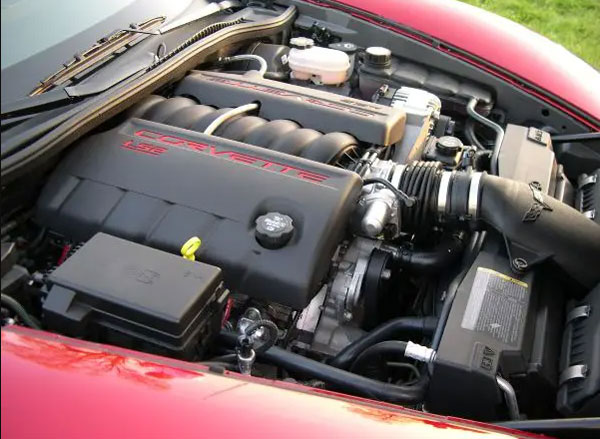
But the innovation continued. Incorporating a dual-mode exhaust system for the C6 added an extra touch of finesse to the LS3, providing a quieter driving experience at low RPMs and an intense, unrestricted roar during high-performance driving.
With a noticeable 6 horsepower and 4 lb-ft of torque boost over the standard exhaust system, the LS3 in the C6 Corvette proved to be a force to be reckoned with.
The LS3 engine made a name for itself with a decade-long run of unmatched performance.
From its debut in the 2008 C6 Corvette through its final commercial appearance in 2017, the LS3 empowered multiple manufacturers’ vehicles in America and Australia, including Corvette, Camaro, Pontiac G8, Chevy SS, and Holden.
Its remarkable lifespan dramatically outlived its predecessor, the LS2. You can still acquire a brand-new LS3 unit to experience exceptional power and speed.
-Chevy LS3 Specs and Applications
In Corvette engines, the LS3 stands out as a powerhouse. It boasts an increased displacement of 0.2L from its predecessors, thanks to a whopping 103mm bore diameter.
However, the LS3 has more than just size to offer. With a compression ratio of 10.7:1 (albeit decreased from previous models) and a cylinder head design sourced from the L92 Vortec truck engine, the LS3 boasts higher airflow figures and larger intake and exhaust valves.
To top it off, the 6.2L LS3 features an aggressive camshaft, improved rocker arms, and stronger valve springs — all of which ensure performance and power under the hood.
The LS3 engine model embodies the famous LS engines’ characteristics, making them unbeatable in strength and reliability for years.
LS3 has surpassed its predecessor LS2 by featuring a stronger block, hyper eutectic aluminum pistons, and six-bolt main construction, strengthening the already robust package.
It’s worth noting that the stock-internal LS3 has shown resilience by handling around 800 horsepower, almost double its stock output. Now that’s a beast of an engine.
What Cars Used The Chevy LS3?
- Chevrolet C6 Corvette (2008-2013)
- Chevrolet SS (2014-2017)
- Chevrolet Camaro SS (2010-2015)
- Pontiac G8 (2009)
LS2 vs LS3 Differences ( LS3 vs LS2 Comparison Chart)
The LS formula remains consistent between engines of the same generation; nonetheless, there are obvious and not-so-obvious changes. And boy, these distinctions make the LS3 perform better than LS2!
Chevy has concentrated on improving the short block of both the 6.0L and 6.2L LS engines with better piston design and robustness. However, the cylinder head design sets the LS3 apart from the LS2, taking power and performance to the next level.

Not content with better flow alone, the LS3 6.2L boasts larger valves and a higher performance cam that complements the engine’s athletic drive. And remember the reworked intake manifold that makes a real difference in port design.
-Is LS2 or LS3 better?
The LS3 is a slight but noteworthy improvement from its predecessor, the LS2, in design and efficiency. One of the key differences between the two is the LS3’s slightly larger bore size of 103.25 millimeters, as opposed to the LS2’s 101.6 millimeters. This change leads to a performance boost of up to 30 horsepower for the LS3, or 36 horsepower when combined with the HSV.
But that’s not all. The LS3 also operates more smoothly and effectively than the LS2, owing to its bigger barrel that increases elevation. And when we compare the LS1 to the LS2, it’s clear that the latter engine has superior performance.
Still, the LS3 reigns supreme compared to the LS2 regarding horsepower, potential, and overall output.
-Engine Comparison Chart
| PARAMETER OF COMPARISON | LS3 | LS2 |
|---|---|---|
| Horsepower | 426-436 horsepower | 390-395 horsepower |
| Torque | 420-428 ft/Lbs | 400ft/Lbs |
| Capacity | 6.2L / 376 cu / in | 6.0L (5,967 L) / 364.1 cu/in |
| Travel | 3.62″ (92mm) | 3.62″ (92mm) |
The world of automobile technology is constantly evolving, and the LS engine family continues to make waves. The LS2 and LS3 engines have become well-known and reliable options.
The manufacturer of the LS2 made improvements to its gear ratio from 26x to 56x, including the camshaft belt’s gear ratio from 1x to 4x. These enhancements helped establish “LS2” as a popular term.
The LS3, the other hand, hit the market in 2008 and remains a favorite among automakers. With its impressive stability, it’s no wonder it can generate 430 horsepower.
As the newer of the two engines, the LS3 is a testament to the LS family’s continued development and success.
-Size & Dimensions
| Parameter of Comparison | ls3 | ls2 |
| Displacement | 6.2L / 376 c.i.d. | 6.0L / 364 c.i.d. |
| Bore Dia | 4.065 in. | 2.751 in |
| Deck Height | 9.240 in. | 9.240 in |
On city roads, expect an average of 14 to 17 miles per gallon. When cruising on the highway, the T-56 six-speed transmission can range from the mid-nineteens to the low thirties, while the LS2 may use slightly less gasoline under the same road conditions.
Speaking of the open road, after only 800 kilometers, we obtained between 17 and 20 miles per gallon on the highway. During a cruise, the instant averages of LS3 and LS2 head between 4 and 12 liters per hundred. Trust us; these stats are to be noticed by those looking to maximize fuel efficiency and performance.
-Fuel Consumption & Performance Comparison
When driving in the city, you can expect an average gas mileage of 14 to 17 miles per gallon. Meanwhile, hitting the open road proves to be more efficient, with a decrease in gas consumption. Take the T-56 six, for instance. Its typical speed ranges from the mid-nineteen to the low thirties on the highway, while LS2 uses slightly less fuel under the same conditions.
Even with just 800 kilometers driven, I could obtain a gas mileage of 17 to 20 miles per gallon while cruising the highway for LS3 & LS2’s average consumption on a cruise ranges between 4 and 12 liters per hundred. Make sure to keep these factors in mind to optimize your driving experience. Let’s hit the road!
-Maintenance Cost Comparison
LS engines are a game-changer in the automotive industry. LS1 is the most popular of the three, known for affordability, ranging from $1,500 to $2,500 for the engine itself.
LS2 and LS3 are pricier options, with LS2 averaging $2,500 to $4,500 and LS3 setting you back a pretty penny of $4,200 to $6,200 for a used motor and $7200 to 9,200 for a new one from General Motors.
Regarding maintenance, LS3 requires the highest investment due to its impressive horsepower and torque. Expect to pay between $4,200 to $6,200 for a used one and $7200 to 9,200 for a new LS3 engine from General Motors.
In contrast, yearly maintenance costs for an LS2 on average are $295, while a range between $405 to $1400 is needed for an LS3, depending on driving frequency and upkeep. Incorporating LS engine maintenance into your budget requires serious thought into your auto priorities.
-LS2 vs LS3: Reliability Comparison
The LS2 and LS3 are no doubt outstanding engines. However, with each iteration of the LS engine family come advancements over the previous one.
Boasting a bore size of 101.6mm and 103.25mm for LS2 and LS3, respectively, the latter provides an extra 30 horsepower and improved rev-happy s3 compared to its predecessor – a significant benefit.
Overall, it’s easy to see why the LS3 is a sought-after upgrade for drivers looking for a powerful and engaging ride.
-LS2 vs LS3 Intake Manifold
Chevrolet enthusiasts love getting into the nitty-gritty of the LS engine series, and one hotly debated topic is the LS1 vs. LS2 and LS2 vs. LS3 intake manifolds. But it’s no secret that the later engine outperforms the earlier ones thanks to its top-notch intake manifold design.
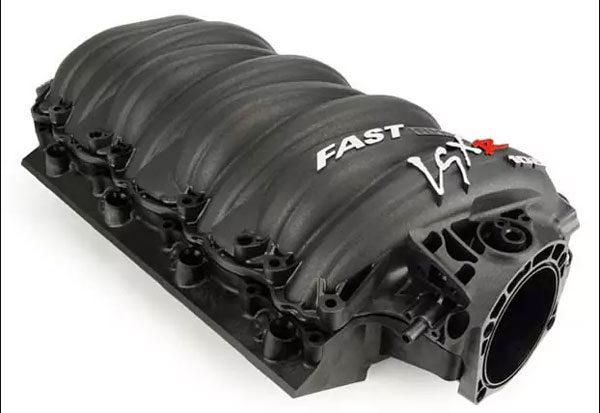
Chevrolet engineers took greater care optimizing the intake runner to achieve an uninterrupted path from the manifold to the cylinder heads. This thoughtful design helps the LS3 intake manifold deliver 5 more horsepower than the LS2.
But there’s more to the LS3 intake manifold than just the revised port shape. Chevy also reduced restrictions to airflow, resulting in a 2-3% reduction. The result is impressive – air moves more smoothly to the heads for impressive power gains.
The LS3 also features a sturdier webbing structure design to prevent flexing and improve rigidity. All in all, Chevy went the extra mile in designing the LS3 intake manifold, and it shows in the performance.
-LS2 vs LS3 Cylinder Heads
The gains in horsepower that most V8 engines boast are often achieved through aftermarket cylinder heads, and in coming up with the LS engine, GM showed that they were no strangers to this.
Over the years, Chevrolet continued to refine the LS cylinder heads, with the LS2 slightly stepping up from the LS1s. But then came the LS3 heads, which proved even better than the LS2s.
Now, while I couldn’t get my hands on definitive flow numbers for both heads, asking some engine builders and sifting through forums revealed that bolting LS3 heads onto an LS2 engine typically results in a 20whp+ gain–pretty impressive, right? And that’s without any modifications, just OEM parts.
So what makes the LS3s so unique? There are differences between the LS2 and LS3, with most boiling down to differences in intake and exhaust port shape, location, and volume, together making for a better-flowing head-on LS3 application.
For instance, while the LS2 featured a cathedral port head design, the LS3 switched to a rectangular shape, with Chevy relocating the pushrods slightly to allow for a larger surface area for the ports to occupy. This change allowed for larger ports, measuring 257cc and 86cc for intake and exhaust, respectively.
In addition, the LS3 utilizes larger intake and exhaust ports than the LS2, with valve diameters of 2.165” and 1.59”, respectively, giving the LS3 an edge in flow. But it’s not just about size; the LS3 head was also designed with a larger combustion area, allowing for better airflow and combustion.
Sure, the LS3’s larger internal area results in a decreased compression ratio compared to the LS2, but the payoff in increased power more than makes up for it.
-ls2 vs ls3 Injectors
For any engine builder, tinkerer, or EFI swapper, knowing the ins and outs of the fuel system is essential. The fuel system comprises vital components like fuel injectors, intake valves, pistons, and combustion chambers, and understanding how they all work together can lead to optimal performance.
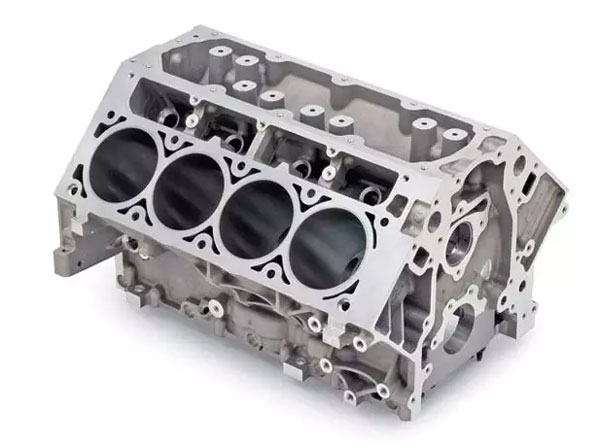
Let’s look at a few popular engine models; the LS1, LS2, and LS3. All three of these engines use port fuel injection, but their fuel injectors vary in length – 2.55 inches for LS1, 2.08 inches for LS2, and 1.48 inches for LS3. Additionally, they have cast aluminum pistons with a 1.5mm/ 1.5mm/ 3.0mm ring package, but the LS3 sets itself apart with piston oil squirters that increase durability.
So Which One is Better?
When car guys debate the LS1 versus the LS2, many agree that the latter is superior.
The LS3 can generate more power than its predecessor, making it a top pick for high performance.
But reality sets in when budgets come into play. We must prioritize which parts to invest in to stay within our means.
While the LS3 would be ideal, only some can foot the bill. As I’ve argued before, opting for a more affordable aluminum 5.3L from a Tahoe could be more competent.
It’s cost-effective but just as effective as an LS1.
Tag: ls2 vs ls3 corvette, ls2 vs ls3 hp, ls2 vs ls3 engine, ls2 vs ls3 reliability, ls2 vs ls3 horsepower, is the ls2 or ls3 better, ls2 vs ls3 injectors, what’s better ls2 or ls3
which is better ls2 or ls3, ls2 vs ls3 intake manifold



I’m Timothy Ballard, owner of a used car dealership in Springfield. I love just about everything automotive, but I have a special place in my heart for trucks. I’m an ASE Certified Master Technician, so I know my way around a car. In my spare time, I enjoy traveling with my family and hiking new trails.
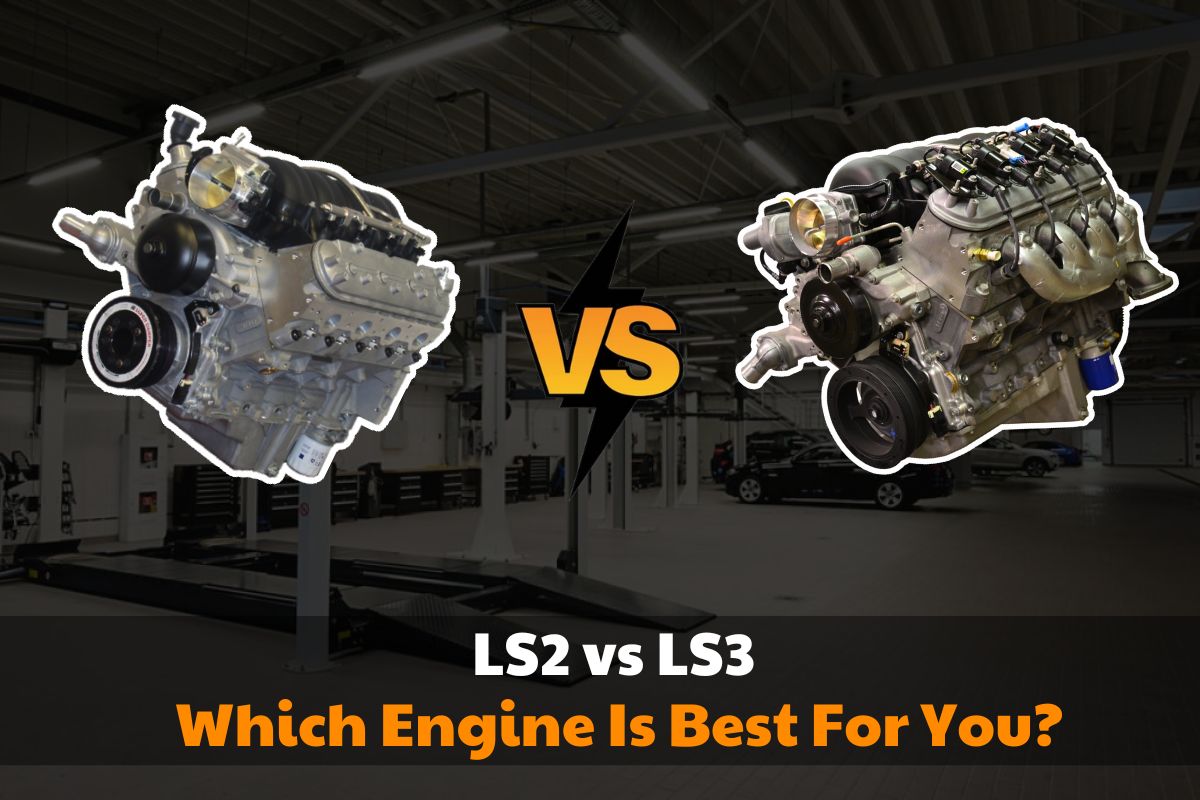
LS2 vs LS3 Engines – Which Is Better?
I am looking for opinions on the LS2 vs LS3 engine in the 05-07 C6. For those who own one, do you have any regrets about choosing the LS2 over the LS3?
I am currently in the market for a C6 and wondering if the price difference of $3-$5k for a 2008+ model is worth it based on real owner experiences. I test drove a 2007 model with 65k miles, and it still felt powerful despite having the LS2 engine. Apart from power, I am also interested in the reliability aspect, as I know there were improvements between the two.
The LS3 engine boasts a marginally reinforced block compared to the LS2, resulting in a power increase of 30 HP. Although I have owned both engines, the disparity in power output was negligible at best. It is worth noting that even Chevy acknowledges that the LS2 engines were underrated in terms of power.
With a bore of 101.6mm, the LS2 engine showcases its power, while the LS3 boasts a slightly larger 103.25mm bore. The increased size not only contributes to the additional 30 horsepower gained with the LS3 (or 36hp with the HSV variants), but also enhances the engine’s rev-happy nature. This combination seamlessly blends power and performance, making the LS3 an attractive choice for automotive enthusiasts.